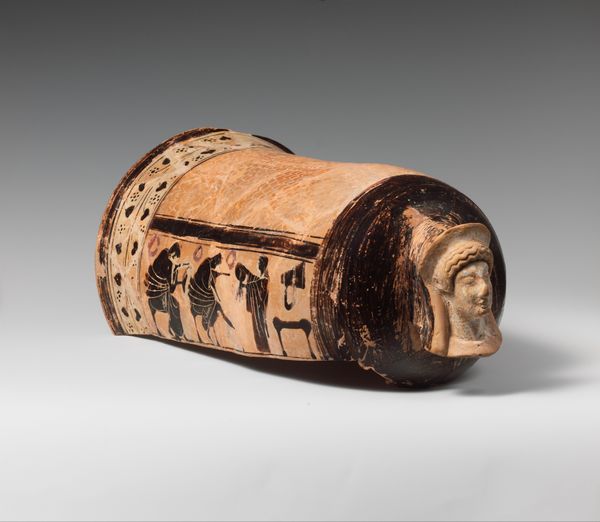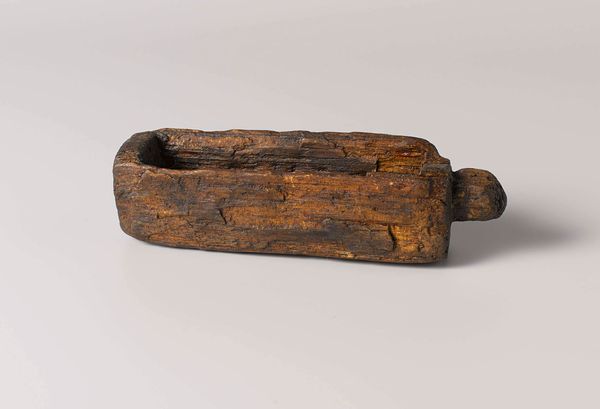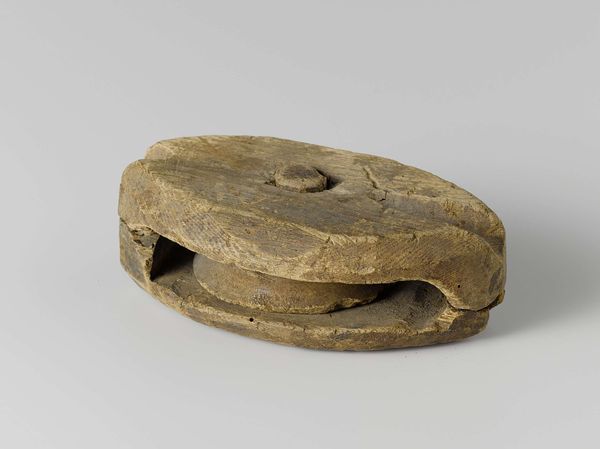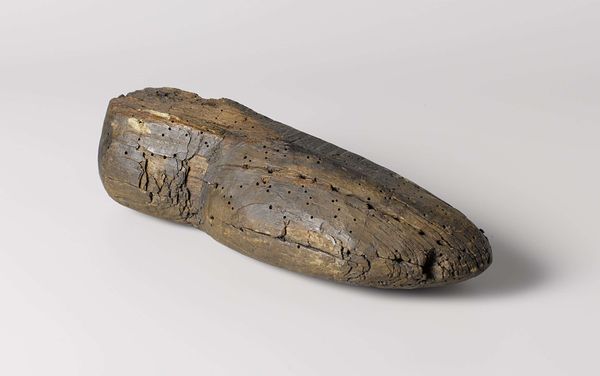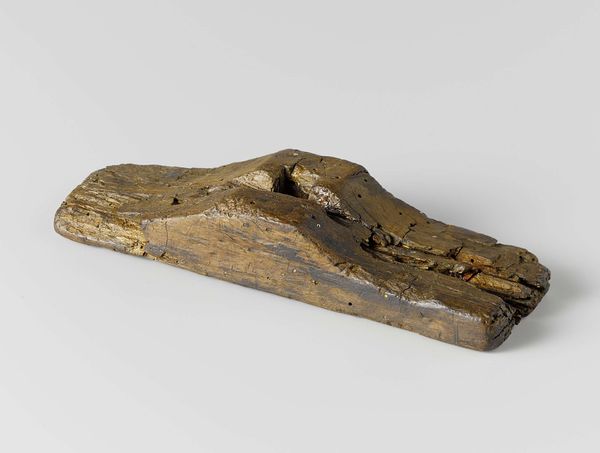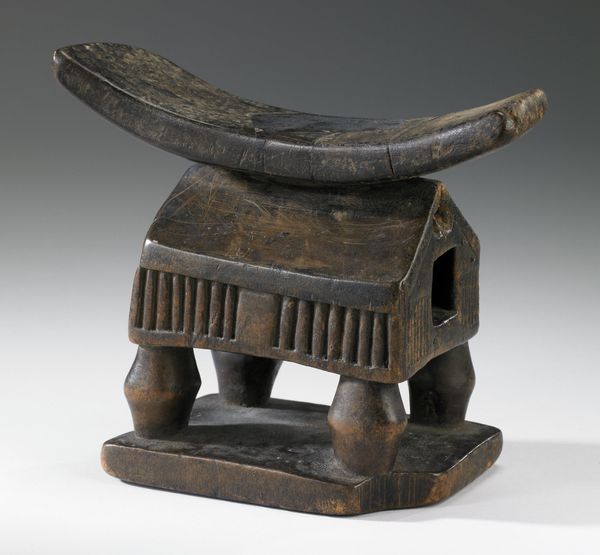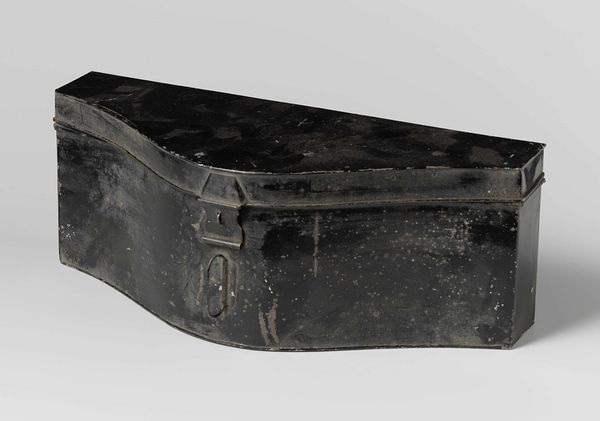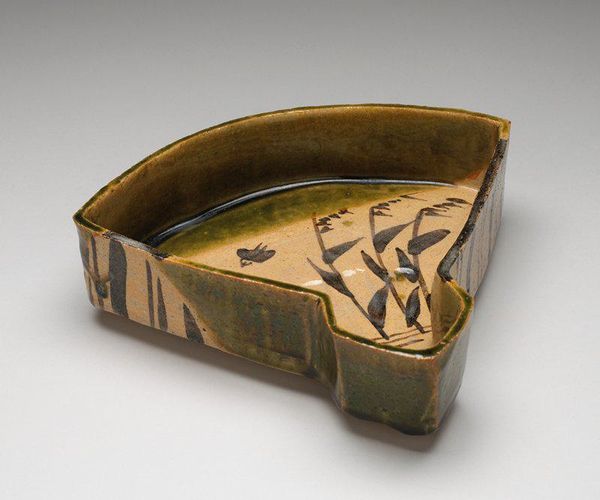
carving, sculpture
#
carving
#
geometric
#
sculpture
#
indigenous-americas
Dimensions: 12.7 × 38.1 × 43.2 cm (5 × 15 × 17 in.)
Copyright: Public Domain
Editor: Here we have a Ceremonial Ballgame Yoke, made around 700-800, by an unknown artist from Veracruz. It's a stone sculpture currently housed here at The Art Institute of Chicago. It feels very dense and weighty to me, almost impenetrable in its meaning. What do you see in this piece? Curator: The dominant characteristic is its closed, curved form. Its weight and solidity are immediately apparent. The smooth, dark stone has been meticulously carved, creating a surface alive with intricate geometric patterns. These shapes don't readily reveal any symbolic system but serve a primarily aesthetic function, enhancing the sculptural quality of the whole. Note how the artist has managed to create this unbroken symmetry and harmony, and at the same time used subtle textural variation? Editor: Yes, now that you mention it, I see the slight asymmetry and how that contributes to the organic feel, preventing it from becoming too rigid. Curator: Precisely. The formal relationships--the balance between line and plane, volume and void--are paramount here. The curvature, resisting linearity, invites a tactile interaction. Consider how light plays across the carved surfaces, defining and redefining the composition from different angles. Are we looking at an aesthetic exercise only or something beyond that? Editor: You've given me a new appreciation for the technical skill involved. I was so caught up in trying to decipher meaning, I missed the beauty of its formal construction. Thank you for guiding me on how to examine it properly. Curator: My pleasure. Formal analysis helps us consider art beyond conventional methods of thinking about art.
Comments
No comments
Be the first to comment and join the conversation on the ultimate creative platform.

